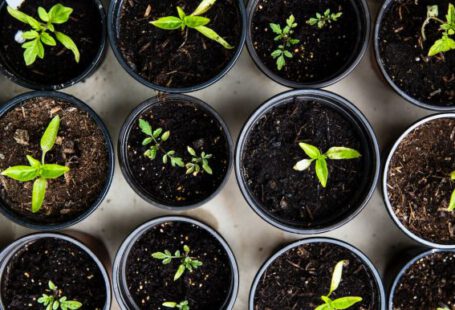As summer comes to an end, it’s time to start thinking about preparing your garden for autumn planting. This is a crucial step to ensure that your plants thrive in the cooler months and set the stage for a successful garden in the following spring. In this article, we will guide you through the necessary steps to get your garden ready for autumn planting.
Clearing and Cleaning
Before you begin preparing your garden for autumn planting, it’s important to clear out any debris or dead plants from the summer season. Remove any weeds, fallen leaves, or spent annuals to create a clean slate for your new plants. This will prevent pests and diseases from overwintering and give your garden a fresh start.
Soil Preparation
The next step in preparing your garden for autumn planting is soil preparation. Begin by testing the pH level of your soil using a soil testing kit. Most plants prefer a slightly acidic to neutral pH level, so adjust accordingly by adding lime to raise the pH or sulfur to lower it.
Once the pH level is balanced, it’s time to improve the soil structure. Add organic matter such as compost, well-rotted manure, or leaf mold to enrich the soil and improve its texture. This will provide essential nutrients to your plants and promote healthy root growth.
Choosing the Right Plants
When it comes to autumn planting, it’s important to choose plants that are suitable for the cooler temperatures and shorter daylight hours. Look for plants that are labeled as “fall” or “autumn” varieties, as these are specifically bred to thrive in the conditions of this season.
Consider planting cold-hardy vegetables like kale, spinach, and broccoli, which can withstand frost and continue to produce well into the winter months. Additionally, autumn is an excellent time to plant bulbs such as tulips, daffodils, and hyacinths, which will bloom beautifully in the spring.
Planting and Mulching
Once you have chosen your plants, it’s time to start planting. Follow the instructions on the plant labels regarding spacing and depth. Ensure that the plants are well-watered before planting them in the ground.
After planting, apply a layer of mulch around the base of your plants. Mulching helps to retain moisture in the soil, suppress weeds, and regulate soil temperature. Use organic materials such as straw, bark chips, or compost for best results.
Watering and Maintenance
Proper watering is crucial for the success of your autumn-planted garden. While the cooler temperatures may reduce the frequency of watering, it’s important to ensure that your plants receive sufficient moisture. Water deeply and less frequently to encourage deep root growth.
Regular maintenance is also essential to keep your garden thriving. Monitor for pests and diseases, and take appropriate action if necessary. Remove any fallen leaves or debris regularly to maintain a clean and healthy garden environment.
Final Thoughts
Preparing your garden for autumn planting is a rewarding task that sets the stage for a successful growing season. By clearing and cleaning your garden, preparing the soil, choosing the right plants, and providing proper care and maintenance, you can ensure that your garden flourishes throughout the autumn months and beyond.
With the right preparation and attention, your garden will be a vibrant and beautiful space that brings joy and satisfaction. So roll up your sleeves, follow the steps outlined in this article, and get ready to enjoy the fruits of your labor in the months to come. Happy autumn planting!





